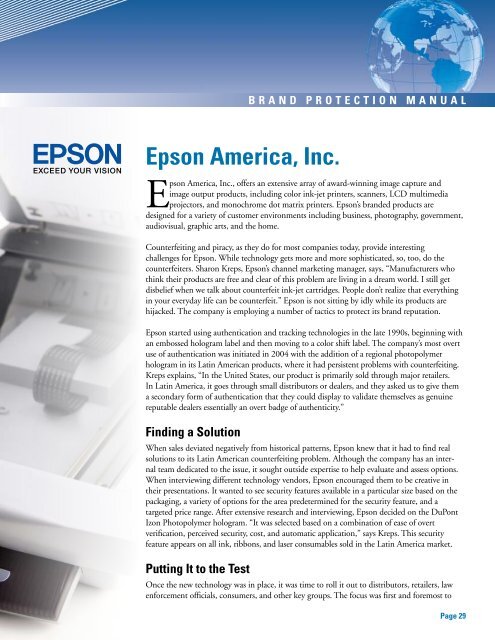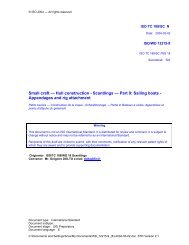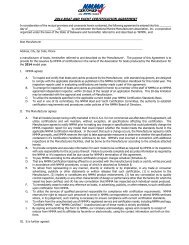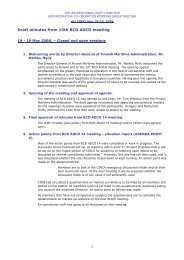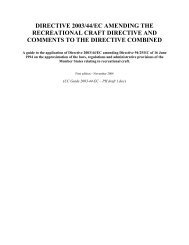Intellectual Property Protection and Enforcement Manual - Ipr-policy.eu
Intellectual Property Protection and Enforcement Manual - Ipr-policy.eu
Intellectual Property Protection and Enforcement Manual - Ipr-policy.eu
Create successful ePaper yourself
Turn your PDF publications into a flip-book with our unique Google optimized e-Paper software.
Br<strong>and</strong> <strong>Protection</strong> <strong>Manual</strong><br />
Epson America, Inc.<br />
Epson America, Inc., offers an extensive array of award-winning image capture <strong>and</strong><br />
image output products, including color ink-jet printers, scanners, LCD multimedia<br />
projectors, <strong>and</strong> monochrome dot matrix printers. Epson’s br<strong>and</strong>ed products are<br />
designed for a variety of customer environments including business, photography, government,<br />
audiovisual, graphic arts, <strong>and</strong> the home.<br />
Counterfeiting <strong>and</strong> piracy, as they do for most companies today, provide interesting<br />
challenges for Epson. While technology gets more <strong>and</strong> more sophisticated, so, too, do the<br />
counterfeiters. Sharon Kreps, Epson’s channel marketing manager, says, “Manufacturers who<br />
think their products are free <strong>and</strong> clear of this problem are living in a dream world. I still get<br />
disbelief when we talk about counterfeit ink-jet cartridges. People don’t realize that everything<br />
in your everyday life can be counterfeit.” Epson is not sitting by idly while its products are<br />
hijacked. The company is employing a number of tactics to protect its br<strong>and</strong> reputation.<br />
Epson started using authentication <strong>and</strong> tracking technologies in the late 1990s, beginning with<br />
an embossed hologram label <strong>and</strong> then moving to a color shift label. The company’s most overt<br />
use of authentication was initiated in 2004 with the addition of a regional photopolymer<br />
hologram in its Latin American products, where it had persistent problems with counterfeiting.<br />
Kreps explains, “In the United States, our product is primarily sold through major retailers.<br />
In Latin America, it goes through small distributors or dealers, <strong>and</strong> they asked us to give them<br />
a secondary form of authentication that they could display to validate themselves as genuine<br />
reputable dealers essentially an overt badge of authenticity.”<br />
Finding a Solution<br />
When sales deviated negatively from historical patterns, Epson knew that it had to find real<br />
solutions to its Latin American counterfeiting problem. Although the company has an internal<br />
team dedicated to the issue, it sought outside expertise to help evaluate <strong>and</strong> assess options.<br />
When interviewing different technology vendors, Epson encouraged them to be creative in<br />
their presentations. It wanted to see security features available in a particular size based on the<br />
packaging, a variety of options for the area predetermined for the security feature, <strong>and</strong> a<br />
targeted price range. After extensive research <strong>and</strong> interviewing, Epson decided on the DuPont<br />
Izon Photopolymer hologram. “It was selected based on a combination of ease of overt<br />
verification, perceived security, cost, <strong>and</strong> automatic application,” says Kreps. This security<br />
feature appears on all ink, ribbons, <strong>and</strong> laser consumables sold in the Latin America market.<br />
Putting It to the Test<br />
Once the new technology was in place, it was time to roll it out to distributors, retailers, law<br />
enforcement officials, consumers, <strong>and</strong> other key groups. The focus was first <strong>and</strong> foremost to<br />
Page 29


